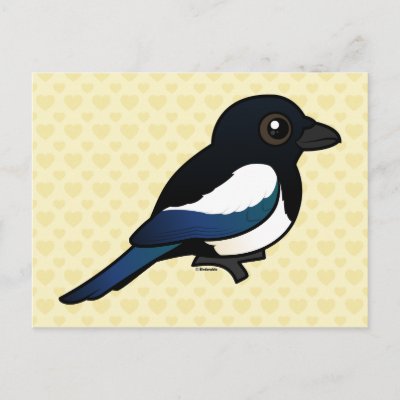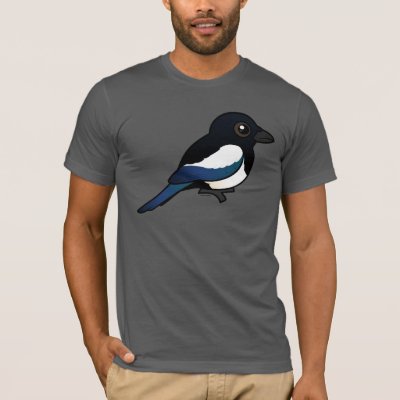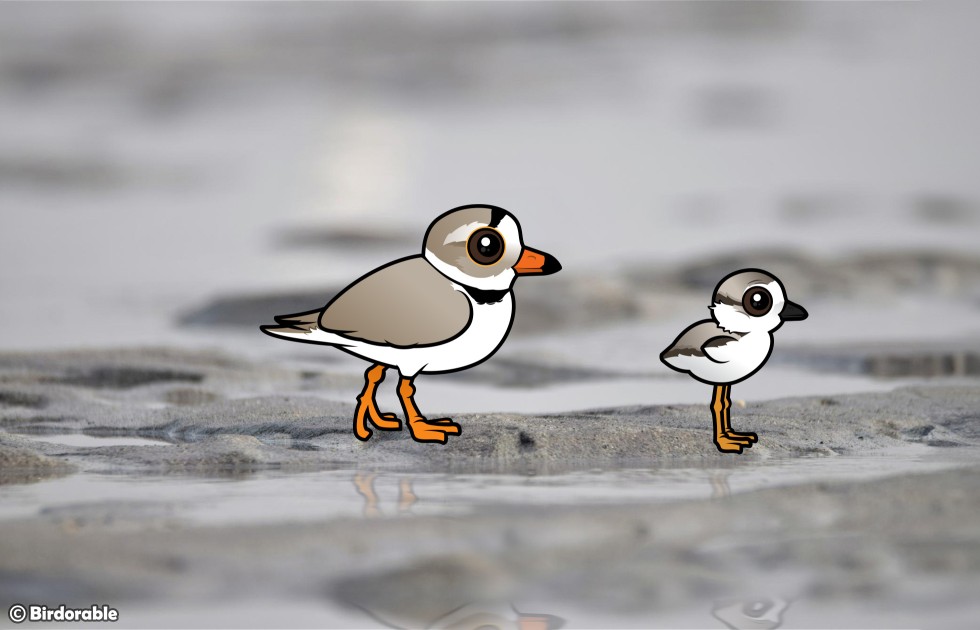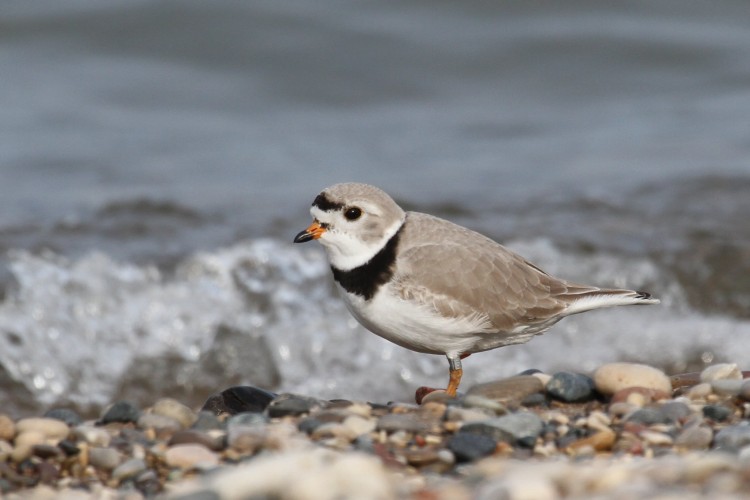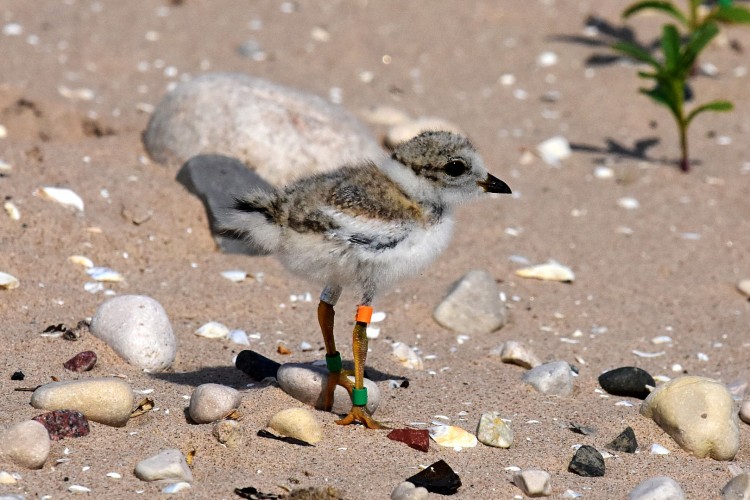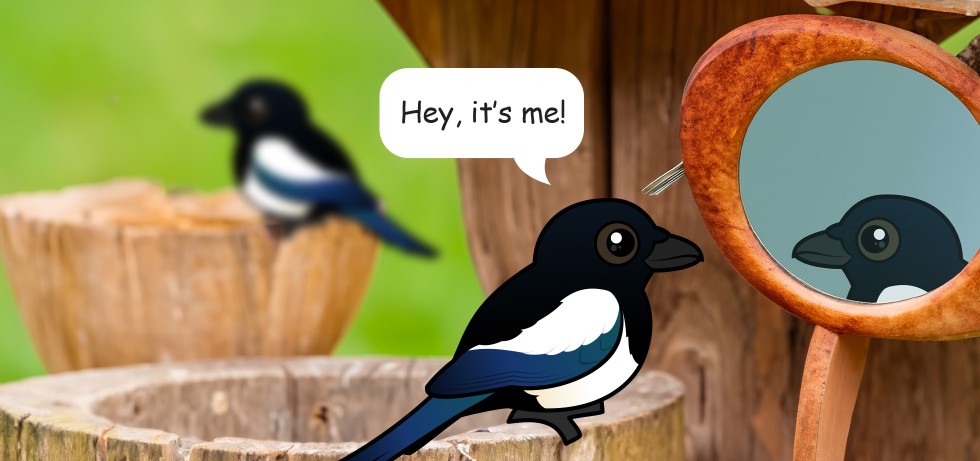
Scientists at the Goethe University in Frankfurt have been studying European Magpies to prove that these smart birds are not bird-brained. It is widely accepted that self-awareness is a prerequisite for the development of consciousness. Besides humans, there had already been evidence that bottlenose dolphins, other apes and elephants have the capability to be self aware. Now magpies can be added to the list. The researchers used a series of tests to determine if their hand-raised birds could recognize themselves in a mirror.
They placed yellow and red stickers on the birds in places where they could only be seen in a mirror. The magpies became focused on removing the stickers after seeing them in the mirror and tried to scratch them off with their claws and beaks. After removing the sticker they would stop this behavior. The researchers also found that the birds would ignore the stickers if they were placed where they could not see them in the mirror or when the stickers were black in color. Here's a short video of the magpie and the mirror:




